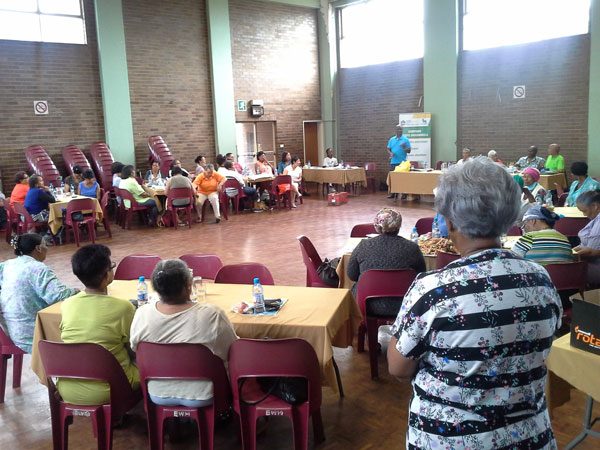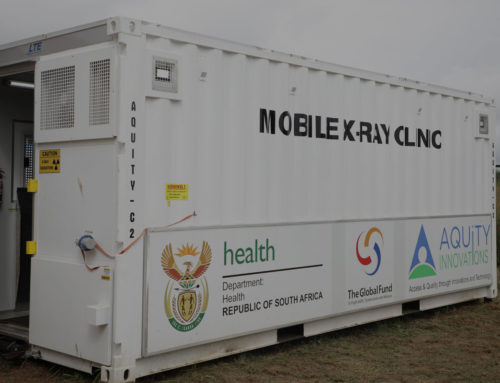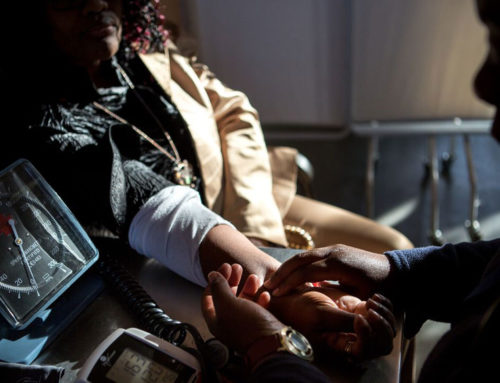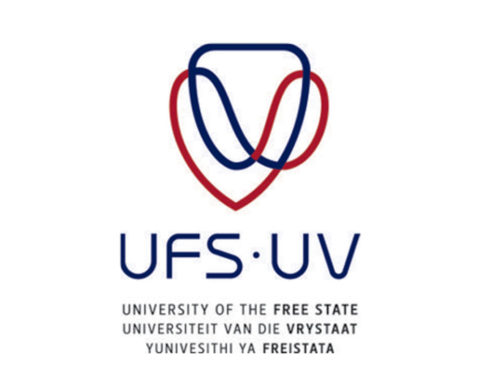Background
Diabetes mellitus (DM) is quietly fueling the spread of Tuberculosis (TB).1 DM triples a person’s risk of developing TB, and rates are rising fast in countries with the highest burden of TB, such as South Africa.2 At current projections, Type 2 diabetes will impact nearly 366 million people by 2030.3 TB and DM are two of the world’s leading causes of death and disability. Therefore, successfully addressing TB and DM requires a coordinated response to both diseases at all levels of the health system. However, care for TB and DM are provided in separate health settings in South Africa, resulting in missed opportunities for early diagnosis and treatment of both diseases.
Sanofi prides itself as not just being a supplier of pharmaceutical products, but also of being a global healthcare solutions leader, focused on a goal: to improve the lives of patients worldwide.In 2016, Sanofi Global selected University Research Co., LLC to implement a DM/TB project in South Africa to complement and support current National Department of Health (NDoH) programs in TB and DM, and to help develop tools, processes, and methods to enable integrated management of TB and DM. AQUITY Innovations NPC, was one of the sub granted local NGOs during this implementation.
Goal and Objectives
The goal of the project was to increase early detection and appropriate management of patients with TB and DM comorbidities in high-volume facilities in four provinces of South Africa. The three primary objectives of the project were to:
- Strengthen health workers’ skills and practices for diagnosis and case management of TB and
- Integrate diabetes screening with TB services, and TB screening in diabetes service delivery provided by high volume public and private health
- Increase patients’ awareness about prevention and control of DM and
Target Groups
The project targets both public and private diabetes and TB service providers, patients at high-volume private and public health facilities, and the general population in the following provinces:
- eThekwini district, KwaZulu Natal
- Buffalo City, East London, Eastern Cape
- City of Johannesburg, Gauteng
- Mangaung district, Bloemfontein, Free State
Interventions
 The project implemented a variety of interventions designed to achieve the three main objectives.
The project implemented a variety of interventions designed to achieve the three main objectives.
To strengthen health care worker (HCW) skills and practices for diagnosis and case management of DM/TB, the project:
- Conducted a rapid assessment of DM screening and management in selected high-volume clinics/ hospitals
- Developed a HCW skills package for integrated management of DM and TB patients
- Provided training to doctors and nurses
- Facility Mentors provide supportive supervision to
HCWs to complement training
To integrate DM and TB into routine health services, the project:
- Integrated TB/DM with high-volume and problem prone services
- Established referral and counter-referral mechanisms
- Created Center of Excellence (COE) sites in each province
- Improved infection control at facility and household levels
To increase patients’ awareness about prevention and control of DM and TB, the project undertook a range of patient education and sensitization activities in all four districts, including:
- Developed educational materials targeting patients and the public
- Conducted Advocacy, Communication and Social Mobilization (ACSM) activities in target communities
- Conducted mass screenings and held awareness events
- Participated in World Diabetes Day and World TB Day
- Conducted policy advocacy at various levels
Key Impact
Patient level
Advocacy, Communication, and Social Mobilization (ACSM): The project developed and delivered key messages in target communities with the aim of increasing awareness about TB, DM, TB/DM prevention strategies and TB/DM co-morbidities. The project used a multi-pronged approach to increase awareness and create supportive behaviors among target populations.
The goals of the ACSM activities were to increase knowledge about TB-DM signs and symptoms and availability of care and treatment at health facilities among patients, increase knowledge of the importance of screening for both TB and Diabetes, increase community health seeking behavior for TB and DM services, and improve patient adherence to treatment and prevention of complications. Over 8,000 people were reached through ASCM activities in target communities. Of these, 4,655 received screening and counselling for TB, DM and HIV.
Provider Level
Health Care Worker Capacity Development: In 2016, health care workers (HCWs) received training on provision of integrated DM/TB care in three districts (Buffalo City Metro, Mangaung Metro, and Umgungundlovu). HCWs training took place in hospitals, primary health centers, and community health clinics. The following HCWs were trained:
- 27 doctors
- 214 nurses
- 294 community health workers
The project designed and conducted two types of
capacity development courses:
 Clinical Training: Doctors, nurses, and community healthcare workers received formal training on national TB and DM screening and management Content of the training included the importance of treating TB/DM co-morbidities, epidemiological and clinical perspectives of TB and DM Interactions, detection and diagnosis of TB and DM, clinical management of DM, clinical management of TB, Patient Education and Counselling, management of patient records, and overall Monitoring and Evaluation (M&E).
Clinical Training: Doctors, nurses, and community healthcare workers received formal training on national TB and DM screening and management Content of the training included the importance of treating TB/DM co-morbidities, epidemiological and clinical perspectives of TB and DM Interactions, detection and diagnosis of TB and DM, clinical management of DM, clinical management of TB, Patient Education and Counselling, management of patient records, and overall Monitoring and Evaluation (M&E).
2) Low Dose/High Frequency (LDHF) Clinical Training: The LDHF approach utilizes the same curriculum, but the training is divided into four shorter modules, each focused on a different topic, given to providers over time, and offered at the facility. This approach appealed to more providers and minimized disruptions of service delivery which occurred when Health Care Workers s left their duty stations. It also allowed health care providers to continue working and not leave the facility for long periods.
Facility Mentoring: In addition to the training provided, HCWs received mentoring from Facility Mentors. Experienced professional nurses were appointed as Facility Mentors and were assigned to support facilities in three districts. Facility Mentors spent time with nurses and other facility-based HCWs to review patient files and coach HCWs to provide counselling and facilitate patient referrals. HCWs found Facility Mentoring to be a vital component to improving patient care.
Screening of TB/DM Co-Morbidities: HCWs were trained to screen TB patients for DM and to screen DM patients for TB in 22 facilities across three districts. From April –
October 2016, the project reported the following screening rates:
- Of 11,047 TB patients, 8,603 (78%) were screened for DM
- Of 21,792 DM patients, 14,026 (64%) were screened for TB
- 226 patients were diagnosed with TB/DM co- morbidity and enrolled in treatment
Systems Level
The project collaborated with the National, Provincial, and district-level departments of health to strengthen integrated screening and delivery of care for DM and TB.
The project achieved the following:
- Strengthened provision of integrated TB/DM care in facilities by developing screening tools and train HCWs to use the screening tools
- Developed the Non-Communicable Diseases Standard Operating Procedure and received approval from the NDOH
- Established referral and counter referral mechanisms, including the development of referral forms
- Established Centers of Excellence in each district
- Trained HCWs to collect data on DM co-morbidities as part of the TB register
- Regularly collected data on key TB/DM indicators
- Continued collaboration with the NDOH on treatment of non-communicable diseases in addition to infectious diseases




